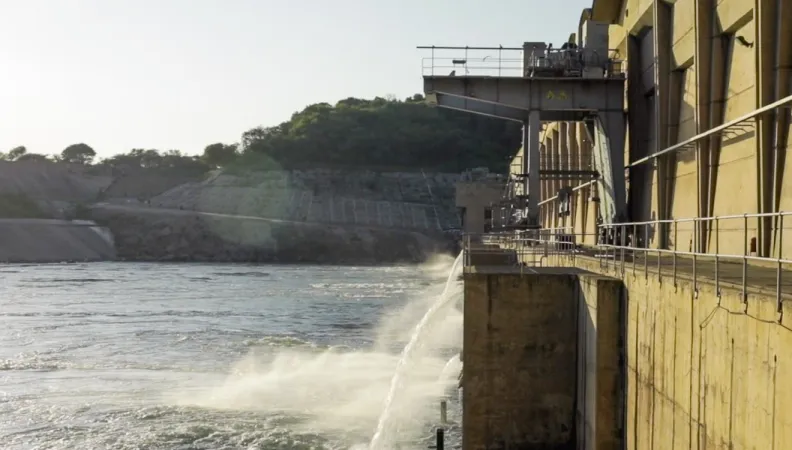Share the page
Pakistan: Harnessing Hydropower to make Energy Sustainable
Published on

Faced with growing demand for energy and a reliance on imported fossil fuels, Pakistan is beginning to tap its immense hydropower potential. In the approach to the International Day of Renewable Energy, we examine a number of projects backed by AFD and its partners that are boosting Pakistan’s hydroelectric power production and making the country’s energy supply cleaner and more sustainable.
For decades, Pakistan has relied on imported fossil fuels like coal, which are pricey, polluting and problematic for people’s health.
With rapid population growth and urbanization, soaring demand for electricity in Pakistan has caused what some observers are calling an energy crisis. Electricity can be unreliable and power cuts can sometimes last up to several hours at a time.
The search for green alternatives
With cleaner alternatives like hydropower accounting for less than a third of the country’s energy mix, Pakistan has begun to build and refurbish hydropower plants, mainly in the northern, mountainous regions near the Afghan and Chinese borders.
From just a few thousand megawatts in the 1950s, Pakistan has seen its hydropower expand to reach more than 10,000 MW of installed capacity today, capable of powering between 10 and 20 million homes.
“However, only 16% of the hydropower potential has been harnessed so far,” says Shah Jahan Mirza, Managing Director of the Energy Ministry’s Private Power and Infrastructure Board in a preface to the 2022 Report, Hydropower Resources of Pakistan. “The remaining untapped potential, if properly exploited, can effectively meet Pakistan’s burgeoning demand for electricity in a cost-effective way, and may also play a vital role in decarbonizing the power system.”
Further reading: Developing Pakistan’s Hydroelectric Resources
Vast energy potential
Estimated at around 60,000 MW, Pakistan's vast hydropower potential lies in its numerous rivers, harnessed by industrial-sized dams to produce clean electricity.
AFD has been supporting Pakistan since 2006, with some 62% of its financing directed towards green energy development.
One such initiative is the renovation of the Mangla hydropower station, originally built in 1967, and one of the largest multipurpose dams in Pakistan. AFD has helped finance renovation of the dam, which has increased energy capacity, reduced emissions, and is in line with national aim of creating a sustainable energy sector.
Planners expect the project to extend the life of the power station by another 50 years, and forecast that the project will be completed by 2027.
The Mangla refurbishment project will not only provide cleaner electricity to the national grid, thus reducing dependence on imported energy and reducing costs to Pakistan’s economy. What’s more, “state of the art technologies and control systems are being introduced,” says Chief Engineer and Project Director, Karim Nawaz.
Training for long-term development
With €2.5 million in funding from the EU's Asia Investment Facility, AFD is helping carry out the renovation of the Mangla Hydropower Training Institute (HPTI), renewing both the infrastructure and its curriculum to ensure that local people are qualified for the burgeoning sector. Every year, some 500 people will be trained to work across the hydropower sector, including industry professionals, university students, and private trainees.
“At HPTI, I got a chance to receive training with senior professionals who are experienced, and I am learning from their experience,” said Aqsa Ali, who added that such training is helping more women enter the profession.
Video: How is training helping address the energy crisis in Pakistan?
Partnerships to facilitate shift from fossil fuels
A number of other projects are underway to accelerate the move towards greener energy, including the construction of the Keyal Khwar hydropower plant (co-financed by AFD, KfW and WAPDA). The project aims to replace a number of thermal power plants, save 182,000 tonnes in CO2 emissions per year, and improve the quality of electricity access for 600,000 residents by 2028.
Work also began in 2023 to extend the power grid in Punjab province, thanks in part to AFD financing, in partnership with National Transmission and Despatch Company (NTDC)). The project is expected to improve access to reliable electricity for millions of people, particularly during heatwaves.
The renovation of the Warsak hydroelectric power station will also contribute to clean, reliable electrification, particularly in the industrial sector. Funded in part by AFD, the European Investment Bank (EIB), and the European Union, the project will repair and renovate dilapidated equipment as part of an effort to boost its considerable energy production, to improve service for an estimated 2 million people and avoid some 280,000 tons of CO² every year.
With power cuts and an unreliable energy supply costing the country an estimated 2% to 3% in annual GDP growth, such initiatives will not only boost clean energy production, they could also spur economic growth. The shift away from fossil fuels towards cleaner and more sustainable energy has been slow and gradual, but it is truly underway.
